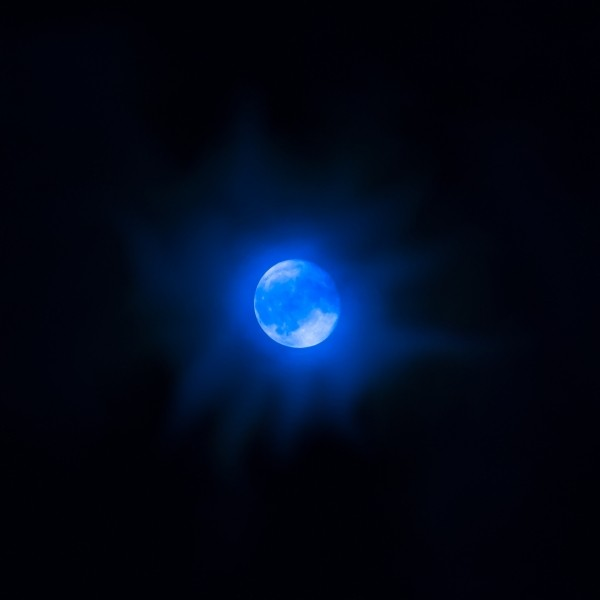Is There Such a Thing as a Blue Moon?
You’ve heard the phrase ‘once in a blue moon’ before, right? It’s a phrase that is used to describe something that rarely happens, or doesn’t happen often. One could even go so far to say it describes something rare or unheard of.
A lot of people sure use the term, but what does it mean? What is a blue moon, and how rare is it really?
What Is a Blue Moon?
 In astronomical terms a ‘Blue Moon’ is nothing more than a full moon. Kind of disappointing huh? While full moons don’t happen all the time, we don’t necessarily consider them rare.
In astronomical terms a ‘Blue Moon’ is nothing more than a full moon. Kind of disappointing huh? While full moons don’t happen all the time, we don’t necessarily consider them rare.
You might be happy to know then that a ‘Blue Moon’ isn’t just any full moon. It is actually defined as the third full moon in an astronomical season of which there are four. It can also be technically phrased as the second full moon in a calendar month – which is rare.
Is a Blue Moon Really Blue?
Sadly, no, a blue moon is not actually a blue color. The term is nothing more than a moniker used to designate a very specific full moon in the astronomical calendar.
That said, there are times when dust or smoke particles can enter the air and scatter red light, making the moon seem blue. The Mt. Karaktoa-eruption in 1883 caused the moon to appear a blue color because of all the ash and smoke it pushed into the atmosphere. Other eruptions that caused such a thing to happen include El Chichon, Mexico in 1983, Mt. St. Helens in 1980, and Mount Pinatubo in 1991.
Without a similar event happening, the moon will appear the same color most of the time.
There is such a thing as a Blood Moon, or red moon which happens during a total lunar eclipse. They happen more frequently than blue boons, believe it or not.
How Rare Are Blue Moons, and When Do They Happen?
There are four astronomical seasons in a year, which you probably know well. Each season has three full moons. The seasons are:
- Spring - March Equinox to June Solstice
- Summer - June Solstice to September Equinox
- Fall (autumn) - September Equinox to December Solstice
- Winter - December Solstice to March Equinox
When one of the seasons has four full moons – instead of the usual three – then the third that occurs is the Blue Moon.
Today, we also call the second full moon in a calendar month the Blue Moon. It’s not technically accurate, and happened after a 1946 article in Sky and Telescope magazine relayed inaccurate information. But many still honor the tradition, wrong or not.
The second full moon happens frequently, about every 2 to 3 years or so. So, you could argue that Blue Moons aren’t rare if you really wanted to.
Related Articles:
What is Terrestrial Time?
What Is a Time Zone?
UTC vs GMT: What's the Difference?
10 Interesting Facts You Didn't Know About Leap Day